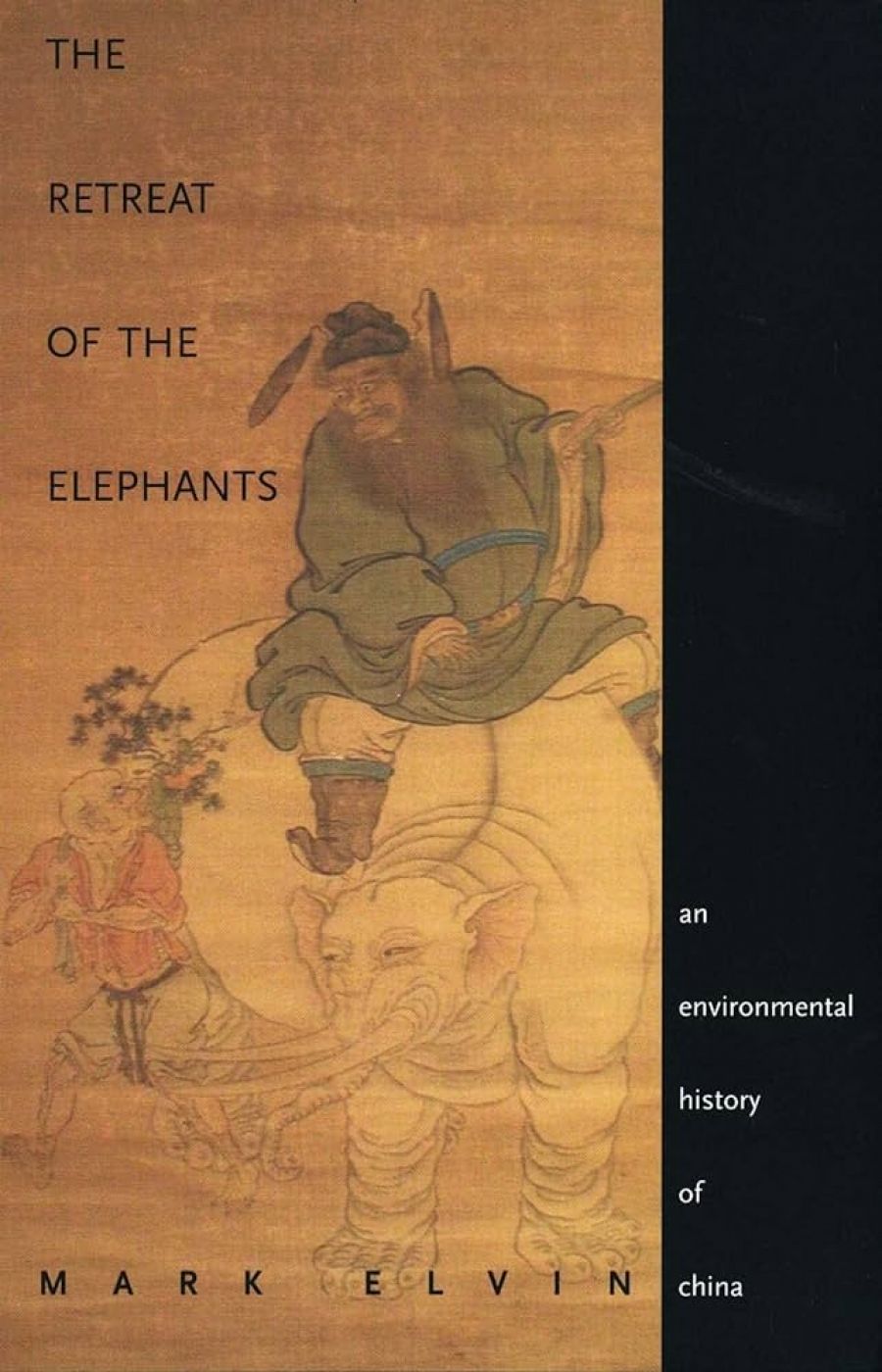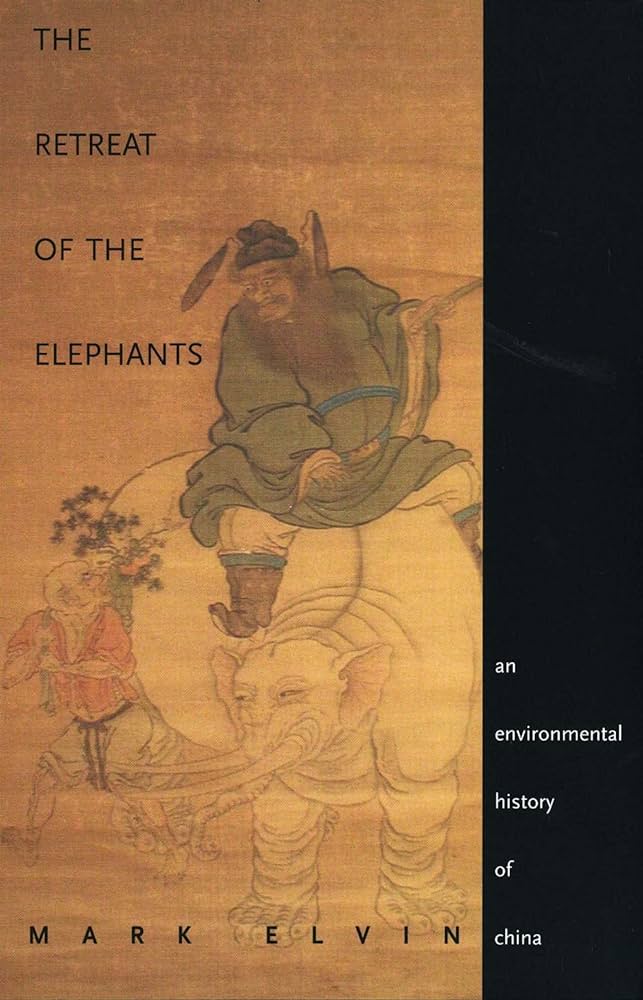
- Free Article: No
- Contents Category: Environmental Studies
- Review Article: Yes
- Article Title: Burnt by the Sun
- Online Only: No
- Custom Highlight Text:
The elephant is now a rare beast in China, where the ox and pig reign supreme among quadrupeds. Precisely because elephants are scarce, The Retreat of the Elephants presents readers with an unforgettable metaphor for the environmental history of China. As Chapter Two of the book shows, that history featured a 3000-year struggle for habitat between elephants and humans. The victory of the humans involved a transformation of the landscape through extensive deforestation, which denuded first the vast plains of north China and then the valleys and hills of the south. The elephants were burnt by the sun.
- Book 1 Title: The Retreat of the Elephants
- Book 1 Subtitle: An environmental history of China
- Book 1 Biblio: Yale University Press, $89.95 hb, 595 pp
- Book 1 Cover Small (400 x 600):

- Book 1 Cover (800 x 1200):

In later chapters of this extraordinary book, the elephant occasionally reappears, and so too the forest, most commonly at the frontiers of Chinese expansion. Mark Elvin records his journey through environmental history in part through reflections on the meaning of the environment within Chinese culture. When he comes across a dead elephant in 1625, or a paean to forests later in the same century, the boundary between Chinese and non-Chinese is close to view. Two points are powerfully made. One is the relative absence in Chinese culture of a love of the natural environment. The other is that, contrary to Max Weber’s dictum, ‘the Chinese were driven by a desire for the rational mastery of the world’.
This mastery was facilitated by war, which Elvin argues was at the heart of the regimentation of Chinese society – a partial regimentation, for he also argues that ‘coercive organisation’ existed symbiotically with ‘commercialised competition’ conducted by ‘relatively small, free and privately owned units’. Here he alludes to the debate over Karl Witfogel’s Cold War theory of ‘hydraulic societies’ as inherently despotic, and, indeed, the chapter on war is followed immediately by one on water control. This is the aspect of the Chinese environment no doubt most familiar to the general reader, since newspapers around the world now regularly carry reports of devastating floods in one part or another of China.
Elvin throws light on contemporary problems of hydraulic management through a survey of the dramatic movements of the Yellow River in the second millennium of imperial rule, and of the efforts to control them. The remarkable capacities of Chinese society to exert mastery over the waters had some paradoxical outcomes: solving one problem created others. Management of the Yellow River led to sedimentation in Hangzhou Bay, hundreds of miles south. Vast hydraulic systems, once created, could not be undone. ‘A one-time strength’ thus became an enduring ‘source of weakness’.
The constant struggle with dykes that characterised life in the major river valleys was a feature of life in many parts of China, but not all. Jiaxing, on the south-east coast, is presented as ‘a model for most of China’. Its polder fields, canals and seawalls defined the hydraulic environment that in this book emerges as a central fact of economic life in late imperial China. Things were quite different in Guizhou, the homeland of the Miao and other non-Chinese peoples in the far south-west of the empire, and also in Zunhua, in the mountains of the north-east. Elvin reads the landscape of Guizhou through the prism of the colonial experience, one marked by a fascination with the exotic on the part of the colonisers and the despair of dispossession on the part of the indigenous peoples. Zunhua, on the other hand, excites his attention because of the longevity of the people. Close enquiry into wealth and poverty, gender relations, leisure and labour, food and water, leads him to a simple conclusion: Zunhua was basically a healthy place.
At the heart of the book is a thesis: the ‘politically driven’ society that matured under imperial rule developed sophisticated methods of environmental exploitation that in the long term brought it to an impasse. After a certain point, the environment had reached the limits of malleability and wrought its revenge in cyclical disasters and resistance to greater productivity. Elvin regards these outcomes as the major cause of the sluggishness of the rural economy in its response to the challenge of modernisation, with implications for the modernity of the economy as a whole. This conclusion will no doubt provoke debate, not something the book as a whole particularly invites. Elvin draws on, without engaging closely with, the scholarly literature in the field. The book is an expository, speculative work in which debate is conducted more often with putative rather than with actual disputants.
Elvin, a professor at the Australian National University, is a scholar of many parts. Over the years he has thought and written about widely divergent aspects of Chinese history: the economy, technology, urbanisation, sentiment, cultural practice. He has done so using strikingly different methods: arguments through literary allusion and textual analysis appear alongside hypotheses posed as mathematical formulae. This book encapsulates the diversity of both his intellectual interests and his methodologies. It covers a vast terrain in imaginative and often unpredictable ways. It invites browsing and inspires a curiosity to match the author’s own.


Comments powered by CComment